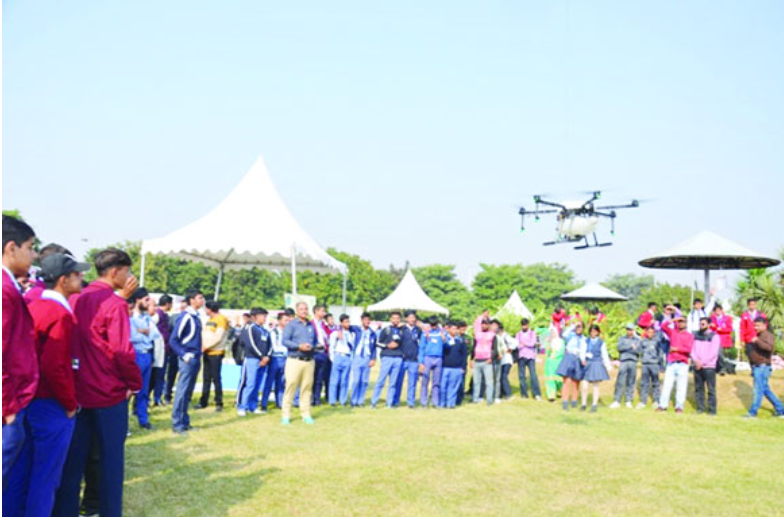
Women constitute a crucial 43 percent of the agricultural labour force in developing countries, highlighting their vital role in agriculture. However, they encounter numerous barriers to achieving gender equality, including restricted access to essential resources such as land, credit, technology, and training. In many regions, women often work on family farms but are not recognized as farmers or owners, which limit their decision-making power and access to support services. Cultural and societal norms also restrict women’s participation in agriculture, particularly in leadership or entrepreneurial roles.
Globally, organizations such as the United Nations and the Food and Agriculture Organization (FAO) have championed initiatives for empowering women in agriculture. FAO’s Women in Agribusiness Leadership Program in Africa equips rural women with technology and entrepreneurial skills to modernize agricultural practices. UN Women’s Climate-Smart Agriculture Projects empower women by providing access to climate-resilient technologies, including drones, to ensure food security. In Kenya, the Digital Green initiative has been instrumental in helping women smallholder farmers accessing innovative technologies like drones for precision farming. Drones are used to map farms, monitor crop health, and assess soil quality, enabling farmers to make data-driven decisions and optimize their yields. The use of drones has helped women reduce the labour intensity of farming while increasing efficiency and crop productivity.
In India too, rural women form the backbone of agriculture by contributing nearly 80% of farm-related activities. Self-Help Groups (SHGs) have long been a cornerstone of women’s empowerment in India. As of the latest data, there are over 90 lakh SHGs across the country, contributing significantly to this number. These groups enable women to pool resources, access credit, and foster entrepreneurship. The SHG framework has proven instrumental in financial inclusion, helping women access banking services, government schemes, and livelihood opportunities. India’s SHG driven schemes have cemented women’s roles as economic contributors.
The NaMo Drone Didi scheme launched by Government of India resonates with these international efforts but takes it a step further by embedding financial inclusion and entrepreneurship into its framework. The scheme aimed at equipping rural women with cutting-edge drone technology for agricultural use and marks a revolutionary step in bridging the gender divide in technology and agriculture. Under the scheme, SHGs will receive 80% financial support for purchasing drones. Additionally, women from these SHGs will be provided with training on drone operation. The business model ensures sustainable income generation, with SHGs charging farmers for drone-based services. The scheme echoes global best practices while addressing local needs.
A drone can spray one acre in just seven minutes, a task that would otherwise take almost an entire day if done manually. This time-saving technology significantly increases productivity while reducing physical strain. Imagine an India where women are virtually ahead of men in using advanced agricultural technology. The NaMo Drone Didi scheme brings with it not only a promise of technological revolution but also a chance to redefine the role of women in the sector. By introducing the concept of “AgridroneDidis,” the initiative ensures that drones are no longer seen as the exclusive domain of men but as tools for change in the hands of empowered women.
The scheme transforms women from labourers to entrepreneurs and innovators, redefining their roles in rural economies. As “AgridroneDidi” takes flight, they embody the spirit of equality, entrepreneurship, and empowerment, paving the way for inclusive agricultural growth in India. The initiative also provides new income opportunities for women by positioning them as agri-service providers, revolutionizing their financial status. Through collective ownership of drones, SHGs not only improve their income but also ensure access to financing opportunities through government support and institutional credit.
Like any other new initiative, the implementation of the scheme comes with its challenges. The collectiveness of the scheme requires a proper understanding of cooperative rules, ensuring the even distribution of benefits among group members. Additionally, the maintenance of the agri-drones and the clear assignment of responsibilities are crucial. It is also essential to maintain accurate accounts. Agencies must ensure that comprehensive training is provided in these areas to ensure the scheme’s success.
In hilly regions such as Jammu and Kashmir, where agriculture faces unique challenges, the NaMo Drone Didi Scheme promises transformative changes. SHGs in the region, already active in initiatives like PashuSakhi and Krishi Sakhi, now have access to advanced tools for agricultural services. The inclusion of drones in their portfolio ensures not only sustainable income but also the modernization of local farming practices. However, implementing such a scheme in regions located near international borders comes with specific challenges. Security concerns associated with drone operations in these regions require special attention. Security clearances, monitoring of drone use, and adherence to strict aviation guidelines are essential to prevent any misuse or misunderstanding. These additional requirements can delay implementation and add logistical complexities for women operators.
Despite these challenges, the scale and potential of the NaMo Drone Didi Scheme are remarkable. By 2025-26, the government aims to allocate 15,000 drones under this initiative, creating a massive wave of opportunities for rural women across the country. With the NaMo Drone Didi Scheme, rural women will not remain just cultivators of fields but champions of innovation and change, heralding a new era of sustainable agriculture and financial independence.
As women embrace AgriDrones, they are not only transforming fields but also creating new opportunities for themselves, challenging the traditional gender roles, and making strides toward true gender equality in agriculture.
Article Credit: dailyexcelsior